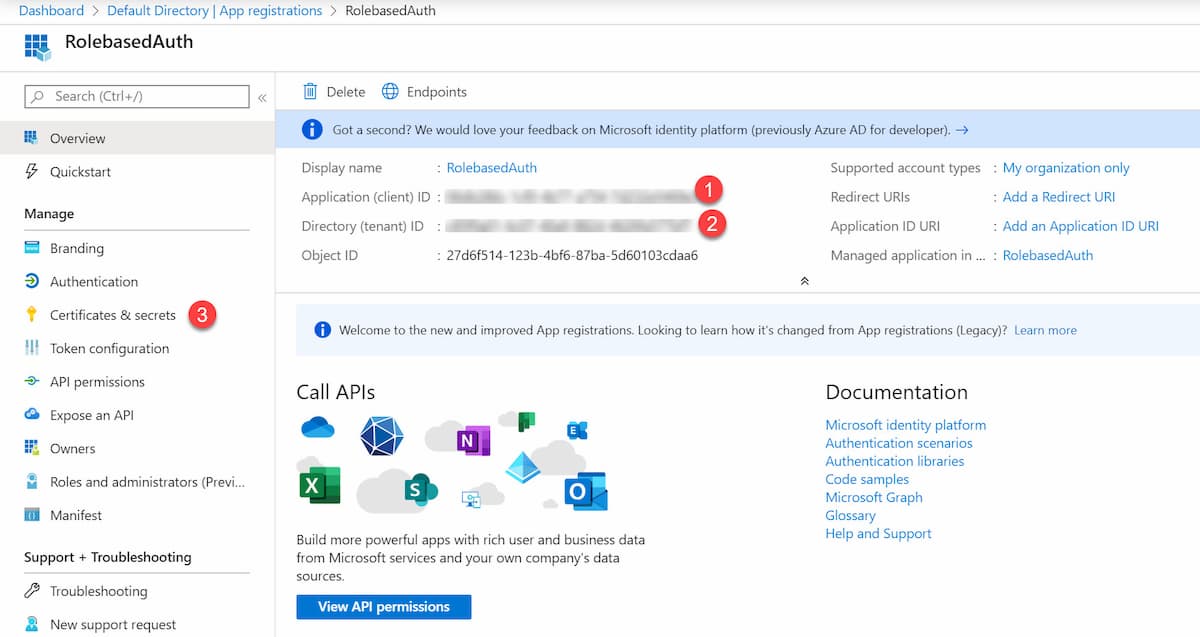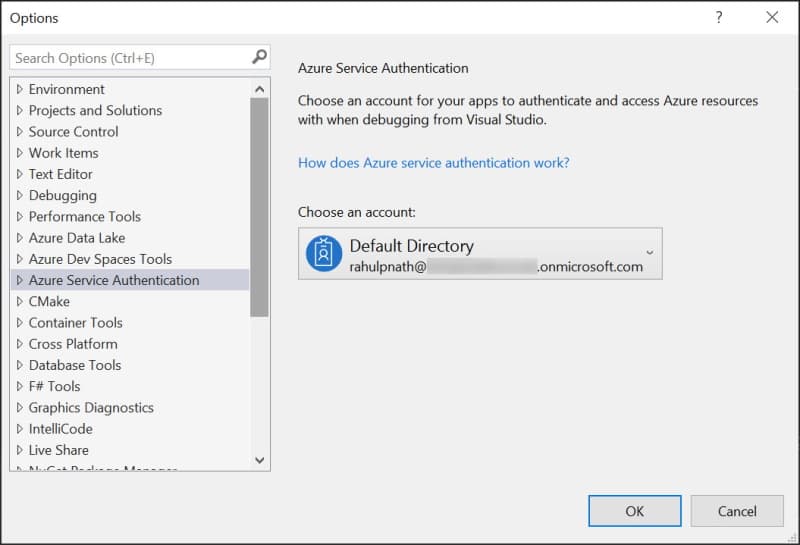
DefaultAzureCredential: Unifying How We Get Azure AD Token
The DefaultAzureCredential is appropriate for most scenarios where the application is intended to ultimately be run in Azure. DefaultAzureCredential combines credentials that are commonly used to authenticate when deployed, with credentials that are used to authenticate in a development environment.
Table of Contents
In the past, Azure had different ways to authenticate with the various resources. The Azure SDK's is bringing this all under one roof and providing a more unified approach to developers when connecting to resources on Azure.
In this post, we will look into the DefaultAzureCredential class that is part of the Azure Identity library. It is the new and unified way to connect and retrieve tokens from Azure Active Directory and can be used along with resources that need them. We will look at how to authenticate and interact with Azure Key Vault and Microsoft Graph API in this post.
The Azure Identity library provides Azure Active Directory token authentication support across the Azure SDK. It provides a set of TokenCredential implementations which can be used to construct Azure SDK clients which support AAD token authentication.
What is DefaultAzureCredential
The DefaultAzureCredential is very similar to the AzureServiceTokenProvider class as part of the Microsoft.Azure.Services.AppAuthentication. The DefaultAzureCredential gets the token based on the environment the application is running. The following credential types if enabled will be tried, in order - EnvironmentCredential, ManagedIdentityCredential, SharedTokenCacheCredential, InteractiveBrowserCredential. Some of these options are not enabled by default and needs to be explictly enabled.
Azure Key Vault
When connecting with Key Vault, make sure to provide the identity (Service Principal or Managed Identity) with relevant Access Policies in the Key Vault. It can be added via the Azure portal (or cli, PowerShell, etc.).

Using the Azure Key Vault client library for .NET v4 you can access and retrieve Key Vault Secret as below. The DefaultAzureCredential inherits from TokenCredential, which the SecretClient expects.
var secretClient = new SecretClient(
new Uri("https://identitytest.vault.azure.net"),
new DefaultAzureCredential());
var secret = await secretClient.GetSecretAsync("<SecretName>");
If you are using the version 3 of the KeyVaultClient to connect to Key Vault, you can use the below snippet to connect and retrieve a secret from the Key Vault.
var credential = new DefaultAzureCredential();
var keyVaultClient = new KeyVaultClient(async (authority, resource, scope) =>
{
var token = credential.GetToken(
new Azure.Core.TokenRequestContext(
new[] { "https://vault.azure.net/.default" }));
return token.Token;
});
var secret = await keyVaultClient
.GetSecretAsync("<Secret Identifier>");
Microsoft Graph API
When connecting with the Graph Api, we can get a token to authenticate using the same DefaultAzureCredential. I am not sure if there is a GraphServiceClient variant that takes in the TokenCredential (similar to SecretsClient). Do drop in the comments if you are aware of one.
var credential = new DefaultAzureCredential();
var token = credential.GetToken(
new Azure.Core.TokenRequestContext(
new[] { "https://graph.microsoft.com/.default" }));
var accessToken = token.Token;
var graphServiceClient = new GraphServiceClient(
new DelegateAuthenticationProvider((requestMessage) =>
{
requestMessage
.Headers
.Authorization = new AuthenticationHeaderValue("bearer", accessToken);
return Task.CompletedTask;
}));
Local Development
In your local environment, DefaultAzureCredential uses the shared token credential from the IDE. In the case of Visual Studio, you can configure the account to use under Options -> Azure Service Authentication. By default, the accounts that you use to log in to Visual Studio does appear here. If you have multiple accounts configured, set the SharedTokenCacheUsername property to specify the account to use.

In my case, I have my hotmail address (associated with my Azure subscription) and my work address added to Visual Studio. However, when using my hotmail account to access KeyVault or Graph API, I ran into this issue. Explicitly adding in a new user to my Azure AD and using that from Visual Studio resolved the issue.
I ran into issues when using my Microsoft account, that I use to login to Azure account. Adding in a new user to Azure AD and using that from Visual Studio got it working.

The SharedTokenCacheUsername can be passed into the DefaultAzureCredential using the CredentialOptions, as shown below. I am using the #if DEBUG directive to enable this only on debug build.
var azureCredentialOptions = new DefaultAzureCredentialOptions();
#if DEBUG
azureCredentialOptions.SharedTokenCacheUsername = "<AD User Name>";
#endif
var credential = new DefaultAzureCredential(azureCredentialOptions);
To make the above source-control friendly, you can move the '<AD User Name>' to your configuration file, so that each team member can set it as required. The same can also be achieved by setting 'AZURE__USERNAME' environment variable. Once set make sure to restart Visual Studio to reflect. With the AZURE__USERNAME set you no longer need to explicitly set the SharedTokenCacheUsername.
Set AZURE__USERNAME to avoid having to write the extra code to set the SharedTokenCacheUsername
Alternatively, you can also set Environment variables and specify the 'AZURE_CLIENT_ID', 'AZURE_TENANT_ID', and 'AZURE_CLIENT_SECRET' which will be automatically picked up and used to authenticate. Check out this post on how to get the ClientId/Secret to authenticate.
Hope this helps you get started with the new set of Azure SDK's!
Thanks to Jon Gallant for reaching out and encouraging me to check out this new set of SDK's
Rahul Nath Newsletter
Join the newsletter to receive the latest updates in your inbox.
